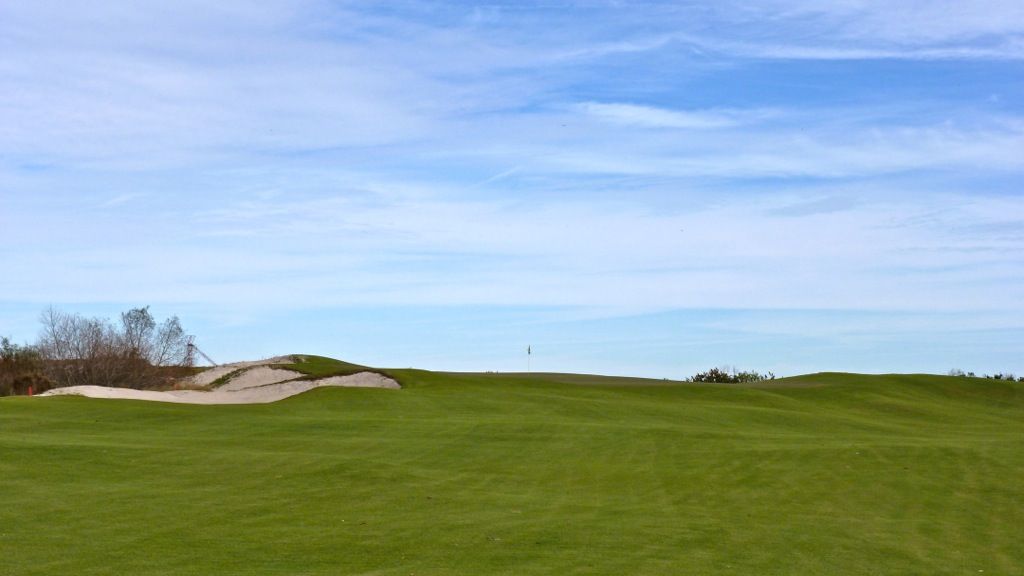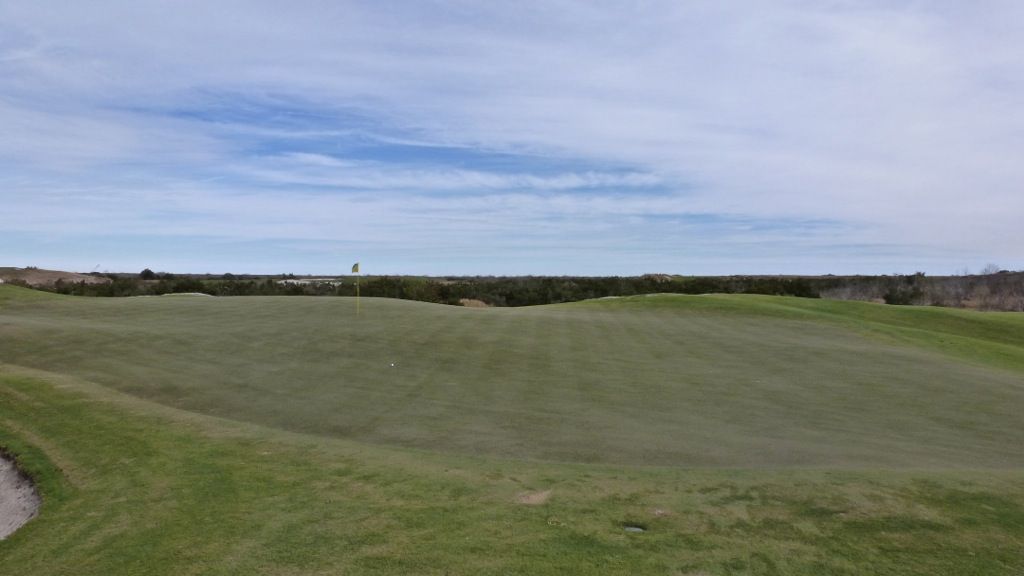Tom Doak's Blue Course at Streamsong Resort is exceptional. From the first tee to the final putt, the golfer is challenged to think his way around the golf course as the direct line is rarely the ideal play. The Coore & Crenshaw Red Course is routed through larger dunes and more prevalent water hazards, perhaps making it a slightly more complicated site, but it is Doak's routing that is the more comfortable one. Doak's routing is near flawless with very short green to tee walks, constant changes in direction, and an ability to move the golfer up and down elevation with ease. The 1st tee, sited at the top of a 60 foot high (?) dune is something of a curious decision, but as Doak noted in an earlier thread the additional length was needed to prevent golfers from waiting for the first green to clear. And, the view is exceptional. The other curiosity is the decision to route the par-3 7th such that the golfer walks to the green and near back to the tee.
Tie-ins on both golf courses are perfect. Transitions from green to fairway to bunker to sandy waste area to dunes to native grasses to water hazards are so natural that one wonders whether these golf courses have been here forever.
Bunker shaping will be familiar to fans of Doak and/or Coore & Crenshaw.
Doak's greens drape perfectly on the land. There is a convexity to the undulations on some greens that is unlike anything I have ever seen before. On the Red Course, bold and broad internal contours will have misplayed shots roll slowly and steadily away from their targets. On the Blue Course, shots landing on the wrong part of the green, especially if from the wrong angle will be propelled in directions the golfer had not considered. The Red Course is overt in its penalties, the blue course subtle; but I'm not convinced the Blue Course is any easier.
Scorecard Information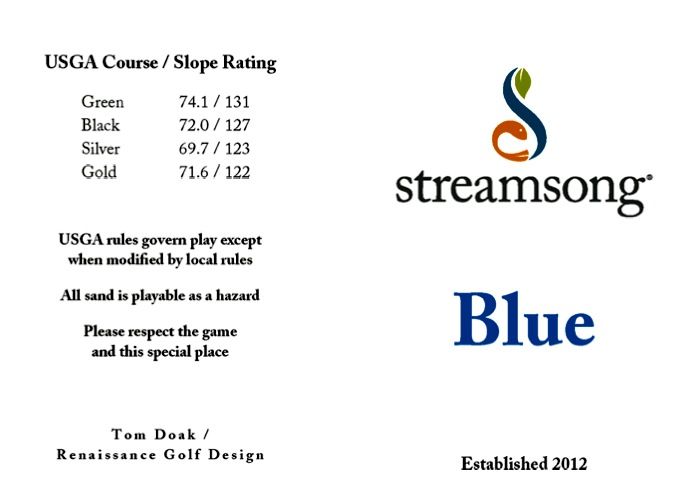

Unlike the 470 yard behemoth of a par-4 on the Red, Doak eases the golfer into the round, offering the opportunity to hit less than driver from the elevated first tee. The width of the 1st fairway is probably 40 yards at its narrowest, and where the option to bailout right is available, the fairway widens to about 100 yards.

Golfers on the 1st tee help to give a sense of scale.

Aggressive tee shots down the centre/left will be rewarded with a simple pitch. Approaching from the right, though from the fairway, is a difficult task requiring a blind approach over a dune to a green that falls off on the left.

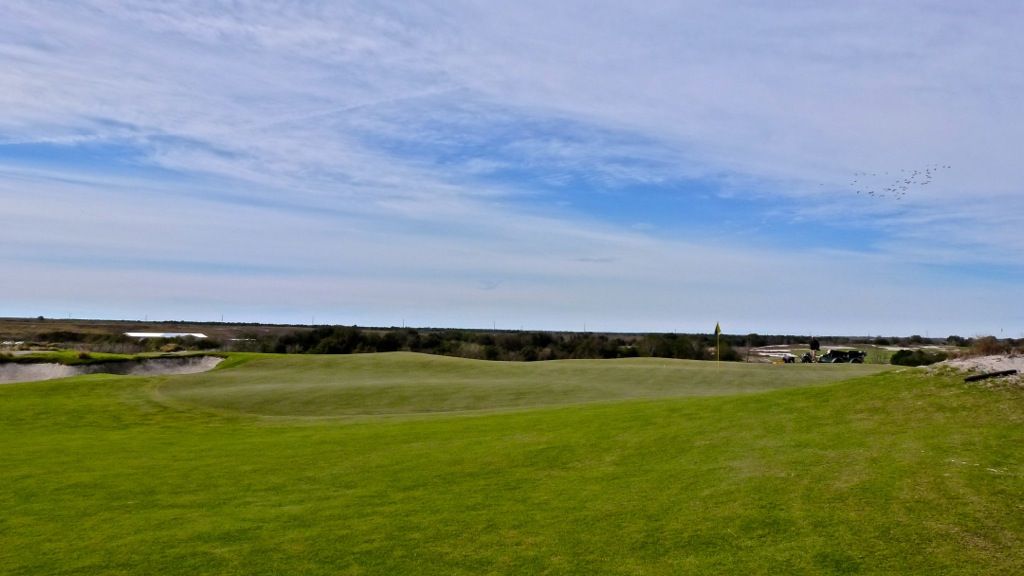
The second is a 550 yard par-5 and golfers long enough to reach this green in two will want to carry the fairway bunker (270 yards) to find a speed-slot.

Along with the 2nd shot on the par-5 9th, the 2nd shot here is one of the two dullest on the course. Those laying-up are presented with ample fairway and no obvious reason to aim anywhere but the centre. Much of the green is hidden from view behind the left bunker, though it is a miss to the right that will cause the real trouble.
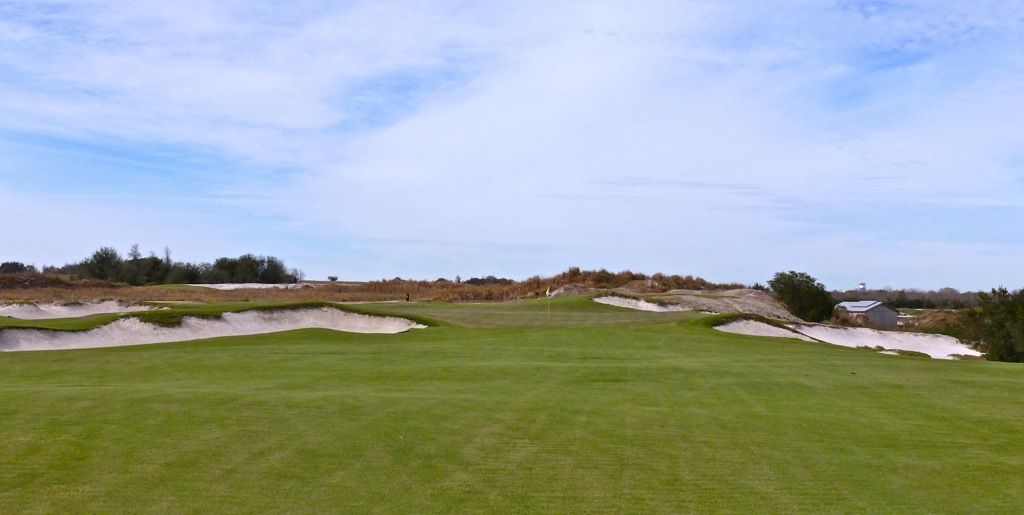

The third hole starts a tremendous stretch of golf. A green set boldly on a plateau is in view from the tee and begs the golfer to play near the hazard line.
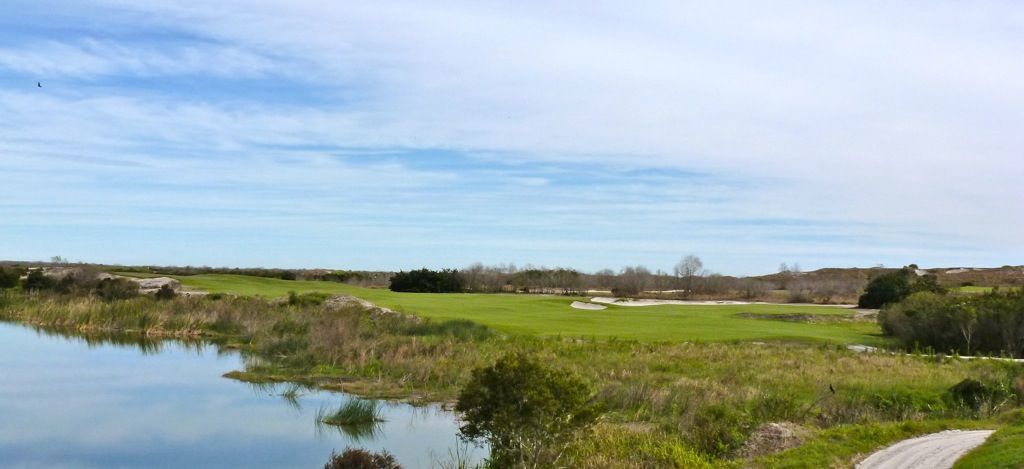
A bold tee shot up the left leaves a simple approach to a blind putting surface though shots missing the plateau right will run a very long way from the hole.
